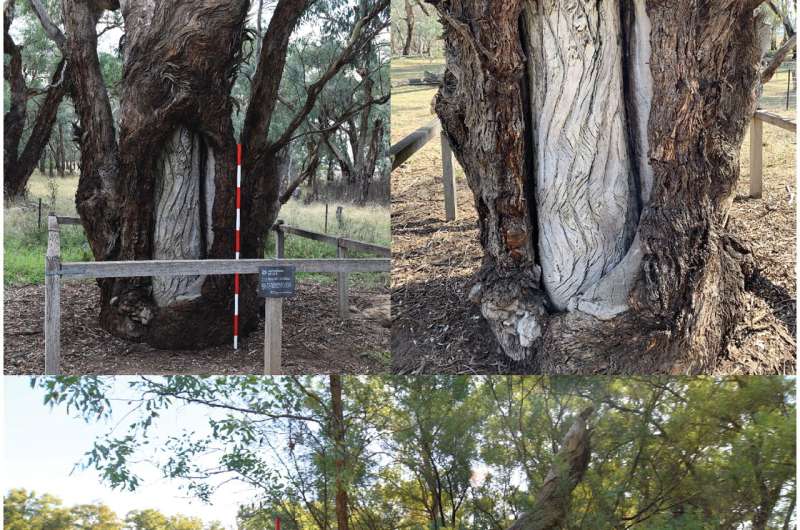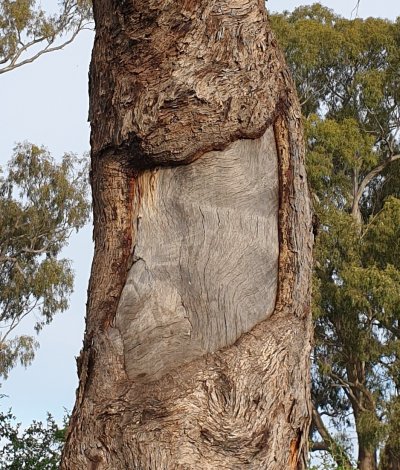Mungoman
Mostly harmless...
- Joined
- Feb 25, 2010
- Messages
- 3,240
- Location
- In the Bush (Peak Hill, NSW)
Just imagine a Society, that stable, that it had continued for 60,000 years through times of drought, flood, warfare and fire with very little change.
That society would've been either a dictatorship or at the zenith of equilibrium.
Then add over three hundred languages, and two hundred dialects just to confuse the issue.
I've noticed that there are varied schools of thought concerning the perception of what Aboriginal Society has/had attained, due to the community that you move through.
Some have seen First Nation as basically paeleolithic, while others see First Nation as the best combination of Agrarian/Hunter Gatherer society.
Personally, I reckon that these Old Ones found the perfect balance of 'each according to their capabilities, each according to their needs'...without the 'Baal Gammon' of communism.
I have hardback editions of the 4 books of the 'Records of the 1948 American-Australian Scientific Expedition to Arnhem land (Melbourne University Press)', where a mob of anthropologists, biologists, archaeologists, ethnologist and linguists lived in the scrub of Anhem Land for six months with a number of different 'Mobs', recording the Daily lives and goings on of a group of people who chose not to live as others did.
And there in black and white is shown the gathering of seed to process flour to make bread, and the consequent reseeding of the biggest seed back into that same area. There are many mentions of the harvesting of fruits and yams, and the replanting of seeds and runners from this tucker to promote intended regrowth.
Then there was the seasonal hunting of animals when there was knowledge that there were no young involved in the hunt...no catching of gravid reptiles, no harvesting of greens or other vegetables prior to seed set and dispersal.
All in all a great insight into what Aboriginal Life has been for thousands of years.
Now...it seems the problem with this Author and His Work is His claims that he is a member of The First Nation, and through this, This Fullas compilation of Fact is being discredited. Never mind that all that He writes about is self evident if you look where Mr Pascoe is pointing.
Anyway, I reckon that His book is worth a read because it can give an insight into how we all did live at one time...and how far we've fallen.
That society would've been either a dictatorship or at the zenith of equilibrium.
Then add over three hundred languages, and two hundred dialects just to confuse the issue.
I've noticed that there are varied schools of thought concerning the perception of what Aboriginal Society has/had attained, due to the community that you move through.
Some have seen First Nation as basically paeleolithic, while others see First Nation as the best combination of Agrarian/Hunter Gatherer society.
Personally, I reckon that these Old Ones found the perfect balance of 'each according to their capabilities, each according to their needs'...without the 'Baal Gammon' of communism.
I have hardback editions of the 4 books of the 'Records of the 1948 American-Australian Scientific Expedition to Arnhem land (Melbourne University Press)', where a mob of anthropologists, biologists, archaeologists, ethnologist and linguists lived in the scrub of Anhem Land for six months with a number of different 'Mobs', recording the Daily lives and goings on of a group of people who chose not to live as others did.
And there in black and white is shown the gathering of seed to process flour to make bread, and the consequent reseeding of the biggest seed back into that same area. There are many mentions of the harvesting of fruits and yams, and the replanting of seeds and runners from this tucker to promote intended regrowth.
Then there was the seasonal hunting of animals when there was knowledge that there were no young involved in the hunt...no catching of gravid reptiles, no harvesting of greens or other vegetables prior to seed set and dispersal.
All in all a great insight into what Aboriginal Life has been for thousands of years.
Now...it seems the problem with this Author and His Work is His claims that he is a member of The First Nation, and through this, This Fullas compilation of Fact is being discredited. Never mind that all that He writes about is self evident if you look where Mr Pascoe is pointing.
Anyway, I reckon that His book is worth a read because it can give an insight into how we all did live at one time...and how far we've fallen.




